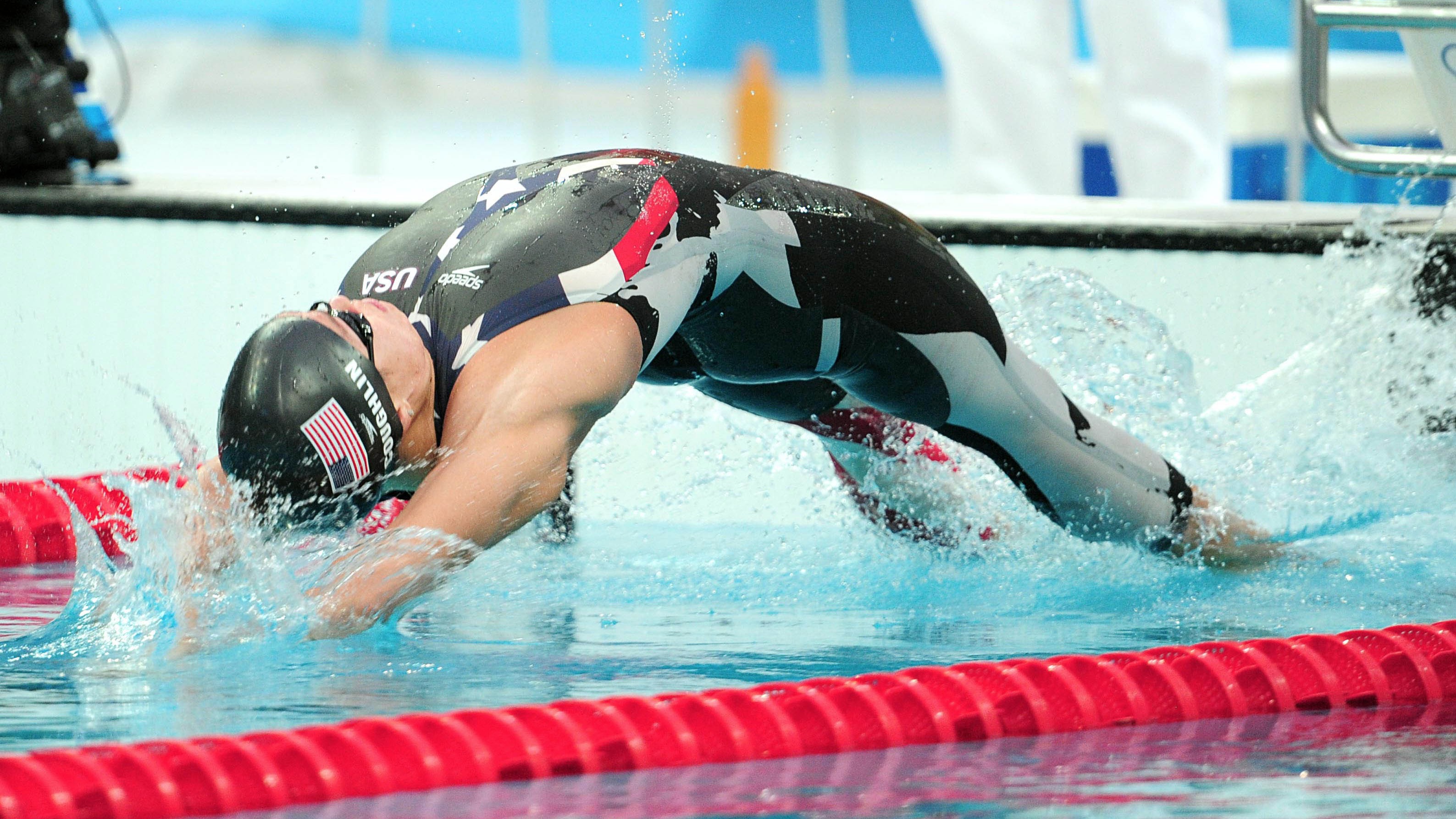Tech Suits: Hype Or Hero?
Tech Suits: Hype Or Hero?
This article compares and contrasts the mental and physical benefits of technical racing suits in competitive swimming.

When Mark Spitz dove into the water for his final race of the 1972 Munich Olympics, he wore a speedo (brief) with no cap or goggles and sported a thick mustache. By the end of the century, swimming had transformed into a sport of biometric bodysuits and speed socket goggles.
The technological landscape has changed the sport drastically in recent memory, most notably in the rise and eventual ban of polyurethane suits in 2010. But how much of an effect do tech suits really have -- and how much of this advantage can be chalked up to the positive mentality you get from putting on a suit you think will help you swim faster?
Are tech suits truly the ultimate difference-maker or are they swimming's most powerful placebo?

You've probably heard the Henry Ford quote, "Whether you think you can or you can't -- you're right," and while it seems almost cliché, the science behind the power of positive thinking is staggering.
This forms the basis for the rhetoric of members of the old-school camp, who claim that while tech suits do offer reduced drag and increased buoyancy, the drops they are associated with come as a result of the increased confidence swimmers exhibit when suited up in $500 worth of nylon. Their opponents maintain that the suit makes all the difference -- despite any potential boost in confidence, those big taper-meet drops are partially dependent on their suit technology.
While both camps' arguments show merit, modern suit science seems to place the truth closer to the side of technology, rather than mentality. Unveiled for the Sydney Olympics, the original Fastskin bodysuit was designed to produce time drops of up to 3 percent, due to its biometric fabrics and shark skin-inspired design.
The real breakthroughs, however, were yet to come: Speedo, following the 2004 Olympics in Athens, partnered with NASA to design what would become the LZR Racer. The team tested nearly 60 different fabrics using a wind tunnel in its pursuit to create the most efficient suit to date. The result -- the first fully bonded, ultrasonically welded tech suit -- reportedly reduced drag by 6 percent. The LZR Racer was worn by 98 percent of medal winners at the Beijing Olympics and accounted for 23 of the 25 world records taken down. Twenty more world records would fall the next year in Rome, leading to the subsequent ban of polyurethane and full-body suits in 2010.

Competitive advantage, whether real or illusory, undoubtedly plays a role in any athlete's confidence -- the first to admit this are the athletes themselves. Equally agreed upon by most athletes is the advantage produced by superior technology, and swimmers are no different. It's why Carbon Flex suits sell out at Arena vendors and why the LZR and similar suits inspired new legislation from FINA to curb the role of technology in the sport.
While the role of technology in swimming remains debated, the realness of its impact is indisputable.
---
The technological landscape has changed the sport drastically in recent memory, most notably in the rise and eventual ban of polyurethane suits in 2010. But how much of an effect do tech suits really have -- and how much of this advantage can be chalked up to the positive mentality you get from putting on a suit you think will help you swim faster?
Are tech suits truly the ultimate difference-maker or are they swimming's most powerful placebo?

Who's right?
You've probably heard the Henry Ford quote, "Whether you think you can or you can't -- you're right," and while it seems almost cliché, the science behind the power of positive thinking is staggering.
This forms the basis for the rhetoric of members of the old-school camp, who claim that while tech suits do offer reduced drag and increased buoyancy, the drops they are associated with come as a result of the increased confidence swimmers exhibit when suited up in $500 worth of nylon. Their opponents maintain that the suit makes all the difference -- despite any potential boost in confidence, those big taper-meet drops are partially dependent on their suit technology.
While both camps' arguments show merit, modern suit science seems to place the truth closer to the side of technology, rather than mentality. Unveiled for the Sydney Olympics, the original Fastskin bodysuit was designed to produce time drops of up to 3 percent, due to its biometric fabrics and shark skin-inspired design.
The real breakthroughs, however, were yet to come: Speedo, following the 2004 Olympics in Athens, partnered with NASA to design what would become the LZR Racer. The team tested nearly 60 different fabrics using a wind tunnel in its pursuit to create the most efficient suit to date. The result -- the first fully bonded, ultrasonically welded tech suit -- reportedly reduced drag by 6 percent. The LZR Racer was worn by 98 percent of medal winners at the Beijing Olympics and accounted for 23 of the 25 world records taken down. Twenty more world records would fall the next year in Rome, leading to the subsequent ban of polyurethane and full-body suits in 2010.

Numbers Never Lie
Competitive advantage, whether real or illusory, undoubtedly plays a role in any athlete's confidence -- the first to admit this are the athletes themselves. Equally agreed upon by most athletes is the advantage produced by superior technology, and swimmers are no different. It's why Carbon Flex suits sell out at Arena vendors and why the LZR and similar suits inspired new legislation from FINA to curb the role of technology in the sport.
While the role of technology in swimming remains debated, the realness of its impact is indisputable.
---